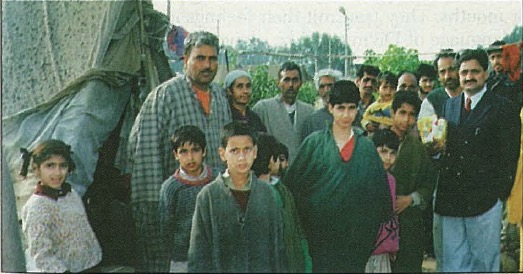A handful of pandits returned to the Kashmir Valley in early October from the bleak camps of Jammu in which they have languished for six years. It was a largely symbolic event in a situation which, for the Hindu pandits, has changed little since 1990 when 700,000 fled the Valley in fear for their lives. This elite group is thought to have lived in Kashmir for the last 5,000 years. Hinduism Today reported on their plight in 1994, and staffers took an opportunity in early 1996 to visit the Purkhoo and Geological Survey of India (GSI) camps a short distance from Jammu. The situation at the camps is unchanged. There are below minimal living facilities, no schools and zero birthrate. Families live in political limbo, classified by the government as “voluntary migrants,” not refugees, and ignored internationally. Each family receives US$42 a month plus a food ration of rice and dal. A few are employed.
The Purkhoo camp of ragged army tents sits on a desolate open river bed; blazing hot in summer and freezing cold in winter. A single well serves 3,000 people. The GSI group of 1,100 are better off, having commandeered the unfinished GSI building. Families partitioned off the multi-story concrete structure with sacks and sheets into makeshift living areas 12 by 20 feet.
Those who permanently leave the camps for jobs are seen by those remaining as giving up on any possibility of a return to their ancestral Valley home and, therefore, as abandoning the thousands-of-years-old pandit tradition. Certainly it appears more could be done to help the uprooted refugees, especially to see to the education of the children. Nevertheless, for now, no one is coming forward.


